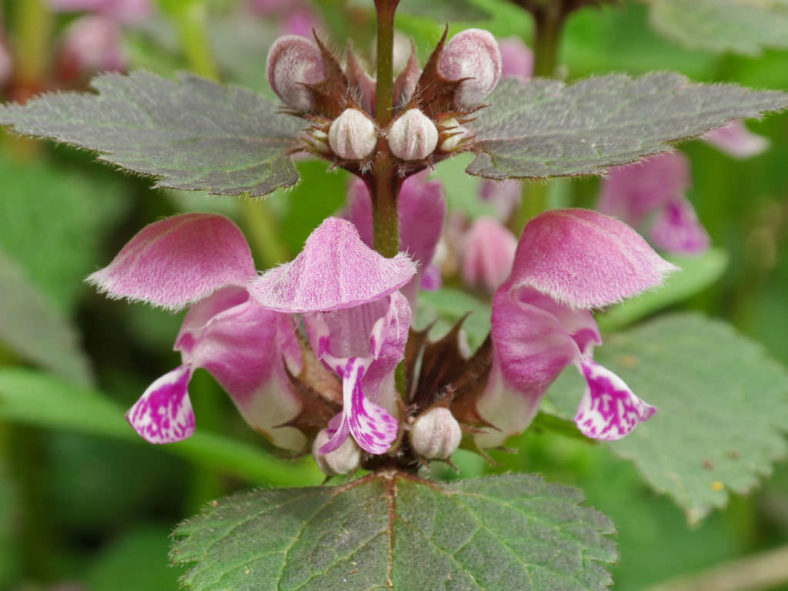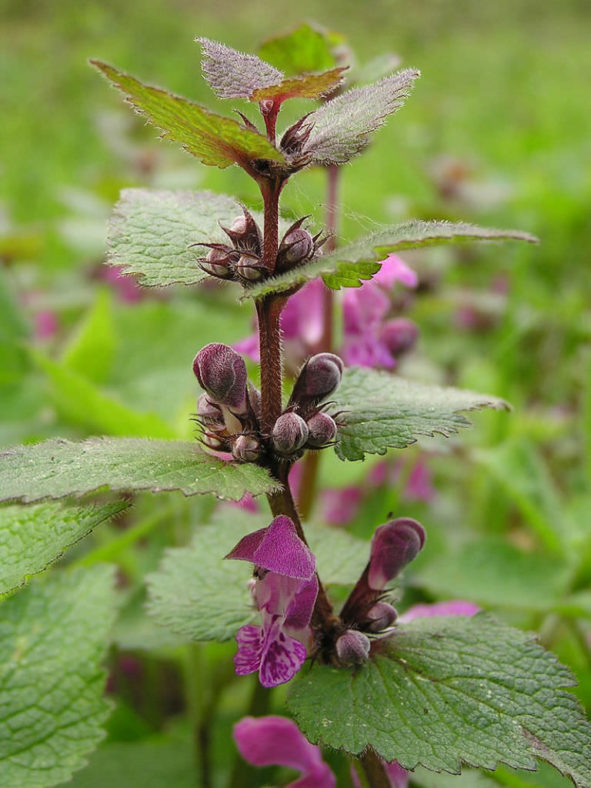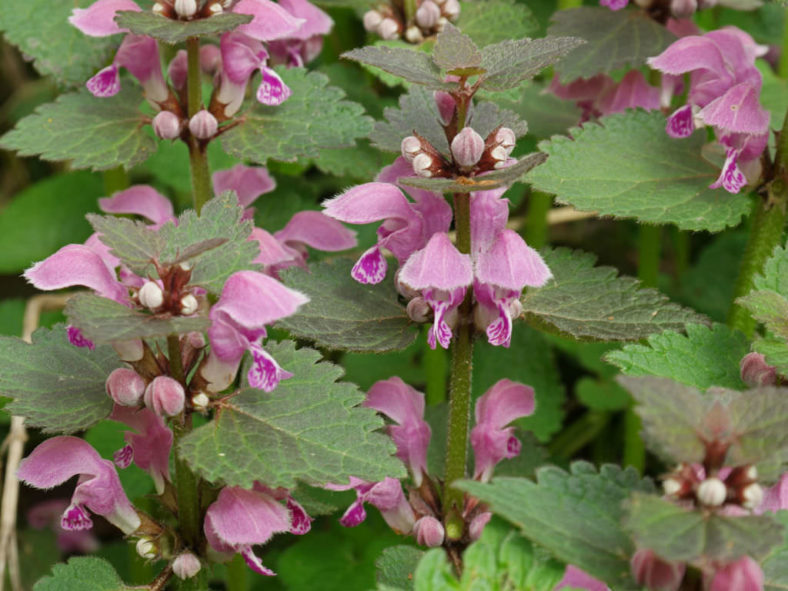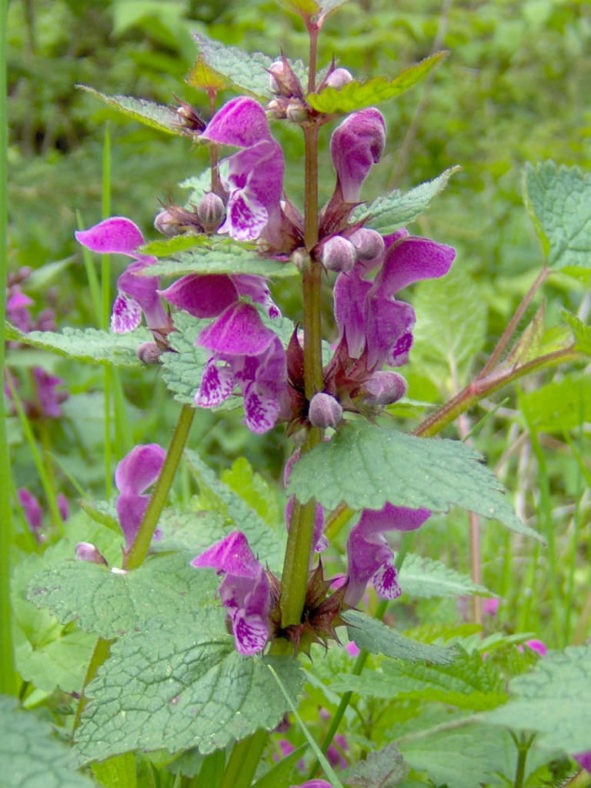Scientific Name
Lamium maculatum (L.) L.
Common Name(s)
Spotted Dead Nettle, Spotted Henbit, Purple Dragon
Synonym(s)
Lamium album var. maculatum, Lamium affine, Lamium cardiaca, Lamium columnae, Lamium cupreum, Lamium cupreum subsp. dilatatum, Lamium dilatatum, Lamium elegantissimum, Lamium foliosum, Lamium grandiflorum, Lamium grenieri, Lamium gundelsheimeri, Lamium hirsutum, Lamium laevigatum, Lamium laevigatum, Lamium maculatum f. maculatum, Lamium maculatum, var. maculatum, Lamium melissifolium, Lamium mutabile, Lamium niveum, Lamium pallidiflorum, Lamium rubrum, Lamium rugosum, Lamium stoloniferum, Lamium tillii, Lamium truncatum, Lamium villosifolium, Lamium vulgatum var. rubrum
Scientific Classification
Family: Lamiaceae
Subfamily: Lamioideae
Tribe: Echinocereeae
Genus: Lamium
Flower
Color: Pink or purplish
Bloom Time: April through November
Description
Lamium maculatum is a spreading herbaceous perennial that grows up to 2.6 feet (80 cm) tall. It has erect, hollow, and pubescent stems, branched at the base only. The soft hairy leaf blades are up to 8 inches (20 cm) long. They are spotted (hence the Latin name "maculatum"), toothed, with up to 1.6 inches (4 cm) long petioles. Their shape varies from ovate-triangular to heart-shaped.
The inflorescence bears 2 to 8 up to 1.2 inches (3 cm) long hermaphrodite flowers. They are formed in the leaf axils of the upper leaf pairs. The upper lips of the flowers are helmet-shaped, usually pink or purplish, while the bilobate lower ones are whitish with purple dots. Stamens are located in the upper lip and have orange pollen. The flowering period extends from April through November.

How to Grow and Care
Lamium is undemanding and easy to grow in partial to fully shaded-locations. It prefers well-drained soil but will do fine in the dry shade if you provide regular watering. A member of the mint family, Lamium spreads quickly, is self-seeding, and will rapidly create a ground cover wherever it is planted. Its brittle, fragile stems help keep it from becoming aggressively invasive and allow bulbs and other perennials to penetrate its foliage. In regions with cold winters, Lamium is deciduous. In milder climates, it is semi-evergreen. In either case, cut back shabby foliage after the first frost to make way for new growth in the spring. After the blooming period is over in midsummer, prune plants back by one-third to help prevent them from becoming too invasive. The midsummer shearing also encourages a second flowering period in September. Not picky, spotted Dead Nettles do just fine in average, well-drained soil. There is no need to apply fertilizer, which can encourage them to become too robust and invasive.
See more at How to Grow and Care for Lamium.
Origin
Lamium maculatum is native throughout Europe and temperate Asia (Lebanon, Syria, Turkey, and western China).
Links
- Back to genus Lamium
- Plantpedia: Browse flowering plants by Scientific Name, Common Name, Genus, Family, USDA Hardiness Zone, or Origin
Photo Gallery
Click on a photo to see a larger version.




